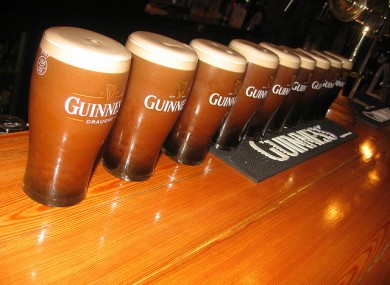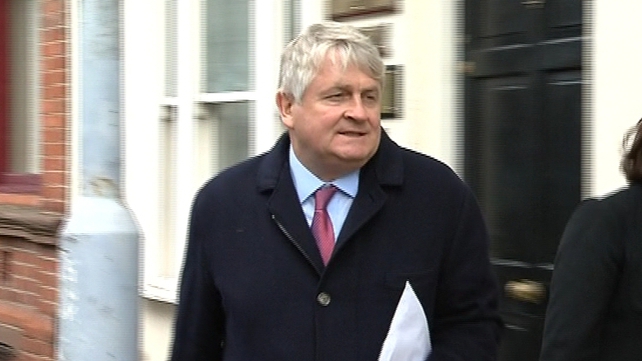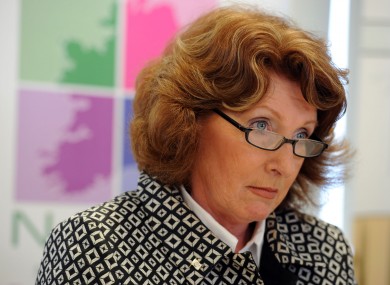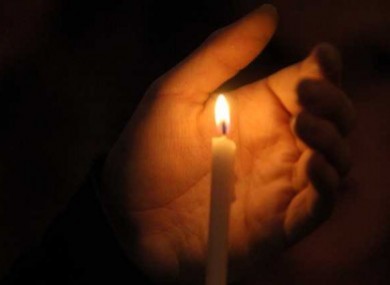Court rules Denis O’Brien does not have to pay tax bill following Esat sale
Irish businessman Denis O’Brien will not have to pay a tax bill of almost €57m following the sale of Esat Digifone more than a decade ago.
The High Court has ruled that a Revenue Appeals Commissioner was correct todecide that his permanent home was in Portugal at the time of the sale, meaning he was not liable for Capital Gains Tax (CGT) on the €285m he received for his stake in the mobile phone company.
Ms Justice Mary Laffoy said she was upholding the decision of the appeals commissioner.
Ms Justice Laffoy said: “Having regard to the evidence given and the facts found by the appeals commissioner, he was correct in holding that 6 raglan road was not a permanent home available to the appellant for the tax year 2000/2001 for the purposes of Article 4.2 of the Ireland / Portugal double taxation convention.”
It had decided that Mr O’Brien’s permanent home in 2000/2001, the time of the sale, was Quinta de Lago, Almancil, Portugal and not Ireland which meant he was not liable for CGT when he sold 5.7 million shares he owned in Esat Digifone.
The Inspector of Taxes was unhappy with the decision, and the Appeals Commissioner agreed to refer the matter to the High Court to determine whether he was wrong in law.
Today, Ms Justice Laffoy found the appeals commissioner was correct in his interpretation of the Taxes Consolidation Act, and she was upholding the decision.
HIQUA Report criticises foster care services in Mayo
Emergency action ordered by Hiqa inspectors to ensure safety of number of children
Sixteen concerns were raised about the welfare and protection of children in Mayo, relating to eight foster care families, over the previous 12 months, according to a Hiqa report published today.
A report has revealed that emergency action was taken to ensure the safety of children in foster care in Mayo.
Not all children in foster care were safeguarded and protected from potential harm, Health Information and Quality Authority (Hiqa) inspectors found.
As a result, the authority issued an immediate action plan requiring the local health area to review a number of children’s cases to ensure they were not a risk of ongoing harm.
Hiqa said this action is an “exceptional regulatory activity” used when inspection findings show an immediate risk to the welfare of children. It said the principal social workers acknowledged the service was not meeting all it statutory responsibilities but managers were taking steps to address this.
Sixteen concerns were raised about the welfare and protection of children, relating to eight foster care families, over the previous 12 months, according to the report published today. Foster carers told inspectors there was little response to requests for assistance or concerns raised on behalf of children in other care placements.
Inspectors concluded that that for a small number of children, there was a delay in responding to early warning signs of possible abuse and that some protective measures were inadequate. “As a result, some children experienced unsafe
placements for a significant period of time.”
Overall, the report found that only five out of 27 care standards were being met. Howver, it said the foster care service being provided improved outcomes for many children. Many, though not all, children were in stable placements where their self-confidence was boosted. The majority of parents believed their children were well cared for.
“However, children’s rights were not always respected. Children did not fully understand what their rights were and some did not feel consulted and included in decisions about their future. Children’s complaints were not addressed in a child-centred manner.”
About one-third of the children placed in foster care did not have a timely child-in-care review, the report said. The majority of children were living with foster carers who valued, accepted and supported them but “this not the experience of all children”. Foster carers did not receive training and were not reviewed regularly to ensure they continued to provide high quality care.
Inspectors found that there was a tendency for placements to drift from short to long-term placements without specific planning. For some placements, matching was poor.
While psychological services and art therapy were available, there were long waiting lists. One child was on a waiting list since 2009 and his/her foster carer had paid privately for a service for two years.
At the time of the inspection, there were 123 children living in foster care, being cared for by 81 foster carers and 26 relative foster carers in 107 households.
A separate report on care services in Waterford found 397 children were still waiting on initial assessments and 31 children were waiting for further assessments.
World’s first ambulance (BUMBLEANCE) for kids unveiled in Dublin
BUMBLEANCE DESIGNED FOR SICK CHILDREN HAS MULTIMEDIA ENTERTAINMENT CENTRE
The Bumblance will commence its pre-booked journeys with sick children on September 16th.
Having made several trips from the Dingle peninsula to Temple Street children’s hospital and back, the couple wanted to create a child-friendly ambulance to help seriously ill children and their families.
“These kids who will use this have shortened lives,” Mr Heffernan said. “So every journey should be special when you have only got this much time on earth.”
The Heffernan’s five-year-old son is also terminally ill and has less than a year to live.
Outside the ambulance is designed to look like a bumble bee, and on the inside there is mood lighting to help calm the child, as well as colourful imagery and writing with large fonts.
All medical equipment is hidden and from their stretcher the child can control the on board multimedia system, which includes a 19-inch LED TV, iPad mini, Sony playstation, Nabi games tablet as well as a full library of films, e-books and music.
Child psychotherapist at the Solamh Clinic, Joanna Fortune, said giving children this little bit of control can be really helpful.
“When you’re in more control and have more power over a situation immediately you feel better about it,” she said.
Ms Fortune added that the parts of the brain which experience physical pain are the same as those where “we can see stress and anxiety”.
She said if you can eliminate this by providing a relaxing environment, then you “can facilitate a child to arrive in hospital in actually less pain”.
On board WiFi also allows for internet browsing, social media engagement and Skype calls. The Bumbleance can also be GPS tracked through their website and members of the public will also be able to tweet or send messages to the child, who will receive a certificate for completing the trip.
Although the Bumbleance is fully equipped to do so it will not be used for emergency services. Its main function will be to transport children with a long-term serious or life threatening illnesses between their home and hospital.
“This is a very unique environment and we would know the benefits directly from having moved children in a normal ambulance,” said David Hall from Lifeline Ambulance Service, who are providing their services to the charity at cost.
“The relief that this will give for parents for seriously ill children travelling will be immense,” he said, describing the ambulance as a “little playground”.
As demand is expected to be high children will have to meet certain criteria to be eligible and bookings will have to be made in advance. A child’s clinician or treating consultant can refer them to Lifeline or the Saoirse Foundation.
Mr Hall said they are expecting to transport up to 40 children per month in the vehicle, which will be based in the company’s Leixlip headquarters in Co Kildare.
The Bumbleance cost less than €200,000 to develop and at least a further €150,000 will be required to run it on an annual basis. Although the project has been welcomed by the Government it has received no state funding.
Speaking at the launch Minister for Children and Youth Affairs Frances Fitzgerald welcomed the private initiative and said it was interesting the service hasn’t been thought about before.
The Minister added that Government funding for the project “doesn’t arise at present”.
“In an environment where budget wasn’t an issue, clearly you’d like to see this kind of service develop,” she said. “We’re very constrained at present, that’s the reality and I wouldn’t want to pretend anything else.”
Mr Heffernan said he is hoping to have five Bumbleances up an running by 2015, one for each province in the country and another based in Dublin.
Almost €1.5k (300) drinks spent in Dáil bar on night of abortion debate (Lapgate night)


Approximately 300 drinks costing just over €1,400 were bought at the Dáil members bar on the night of the abortion debate.
The massive bill was racked up on the same night the controversial lapgate inciden (below photo) took place.
 According to figures obtained by the Irish Sun, TD’s clocked up a bar bill of over €10,000 in the 48-hour period around the abortion debate.
According to figures obtained by the Irish Sun, TD’s clocked up a bar bill of over €10,000 in the 48-hour period around the abortion debate.
The newspaper today revealed that 59 quarter-bottles of wine were consumed along with around 300 pints and almost 50 spirits.
The figures are taken from till receipts in both the members and visitors bars.
The members bar stayed open until 5am in the morning while TD’s were in the chamber participating in the debate.
Meanwhile the Sinn Fein Leader has said the Dáil’s bar needs to cut back on opening hours.
Gerry Adams said it is now clear that some TDs were under the influence of alcohol on the night of the vote.
He said that politicians need to consider their behaviour while they consider new laws.
Someone in Ireland takes their own life every four days here’
Minister of State Kathleen Lynch
Two suicide clusters have been identified in Cork – one of which involved 13 people taking their lives in the space of just three months.
The second cluster involved seven deaths over two months.
Both clusters happened in 2011 and have been confirmed by the National Suicide Research Foundation. The areas have not been identified.
The first suicide cluster includes 12 men and one woman ranging in age from 37 to 54.
Most were married or co-habiting and nearly half were living with partners and children.
The second cluster included three men and four women aged 32-50. Nearly half were married and all were employed at the time of death.
The tragic incidents emerged as it was confirmed that the Cork town of Midleton suffers from one of Ireland’s highest suicide rates, with a section of the local cemetery now grimly nicknamed “suicide row”.
Midleton Town Council member Cllr Pat Buckley lost two brothers to suicide and was so appalled by the scale of local self-harm tragedies he set up the charity, Let’s Get Together.
He warned that, in Cork alone, suicide was now claiming a life every four days.
M/r Buckley said that Midleton, along with Mayfield in Cork city and Kanturk in north Cork, suffered from among the highest cluster suicide rates in the world.
“In the first eight months of this year, there have been about 60 suicides in Cork city and county. That is someone taking their own life every four days in just one county,” he said.
M/r Buckley lost his brothers Mark and James to suicide in 2002 and 2003.
He launched the charity in a desperate bid to highlight the escalating problem and to ensure that other families don’t endure the terrible pain his family have suffered.
“The tragedy is that I believe we could see over 900 suicides in Ireland this year,” M/r Buckley said.
“We set up Let’s Get Together in 2004 and we don’t have one cent in funding support from the Department of Health or the HSE. Everything we do, we have to fund ourselves.”
“The problem is now so serious it is terrifying,” he added.
Irish Scientists unlocking the secrets of our past
Irish Scientists are opening time capsules left by nature that may offer leads on evolution or extraterrestrial life
Scientists have become time travellers by finding new ways to recreate conditions from the past, sometimes using techniques that sound more like science fiction than science fact.
The really important part of the Jurassic Park story was not that dinosaur DNA was mixed with frog genes to make an inter-aeon, inter-species cocktail to populate a T-Rex theme park. It was that millions of years previously, mosquitoes had sucked on the blood of their dinosaur contemporaries before getting trapped in fossilised tree resin.
Thus was made the window to the past for Crichton and Spielberg to imagine the Frankensteinian folly of cloning dinosaur DNA taken from the contents of the preserved mosquito bellies.
In the real world, Jurassic Park raked in more than $900 million at the box office, such was the interest in the time-defying fantasy. And so it has always been: humans are interested in what has been before; and from where, what and indeed whom they have come.
The fantasy bioengineering of Crichton’s fictional enterprise could never happen, but nature has contrived to safely store away evidence that may yet open up new leads on evolution and even extra- terrestrial life.
The Irish time lords
Time to meet the time lords of Irish science. They are sifting through depths of mud and peering into the world’s oldest rocks to unlock Earth’s secret history.
Time to meet the time lords of Irish science. They are sifting through depths of mud and peering into the world’s oldest rocks to unlock Earth’s secret history.
“I have a rock in my office that’s over four billion years old,” says Martin Feely, an expert in the origin and composition of rocks. “It’s a very famous piece of Earth’s crust from near Yellowknife in Canada.” He got the piece as a special favour from a colleague. “It’s the oldest known to man.”
Along with fellow geologist Alessandra Constanzo at NUI Galway’s Ryan Institute for environmental, marine and energy research, Feely is studying “epavorites”, such as halite and gypsum, to learn about the past.
“Evaporites are formed in hot and salty environments,” Dr Constanzo explains. “We have many that were formed over 250 million years ago in places such as Searles Lake near Death Valley in California. “Brine-rich environments got landlocked and cut off. As water evaporated, the brine was crystallised, forming the evaporites.”
The geologists are not only interested in the evaporites, however, but also in what may lie inside.
Prof Feely explains that, as the evaporites formed, so too did “imperfections at the atomic scale”. These imperfections trapped “mother fluid” from which the crystals grew. “The mother fluid contained, ergo, any microbes from the brine.”
The “fluid inclusions”, which Prof Feely calls “mini brine pools” inside the evaporites, might be “teeming with life”. And thus opens another window to past life.
Prof Feely and Dr Constanzo have joined with microbiologist Cindy Smith to take a geo-microbiological journey through time to investigate bacteria and algae trapped in fluid inclusions.
“These were extremophiles. They were thriving in hot, salty lakes – inhospitable places where no other organisms could make it,” says Dr Smith. Learning about them, trapped in their miniature time machines, “would be significant in understanding life millions of years ago”.
The researchers have found organic material and dead microbes in 250-million-year-old evaporites. In evaporites formed just over four years ago, they found living bacteria.
“We’re not sure whether they fall asleep or just tick over very slowly,” says Dr Smith. “But even a four-year-old bacterium, that’s very old – maybe the equivalent of a human living to be several million years old.”










No comments:
Post a Comment